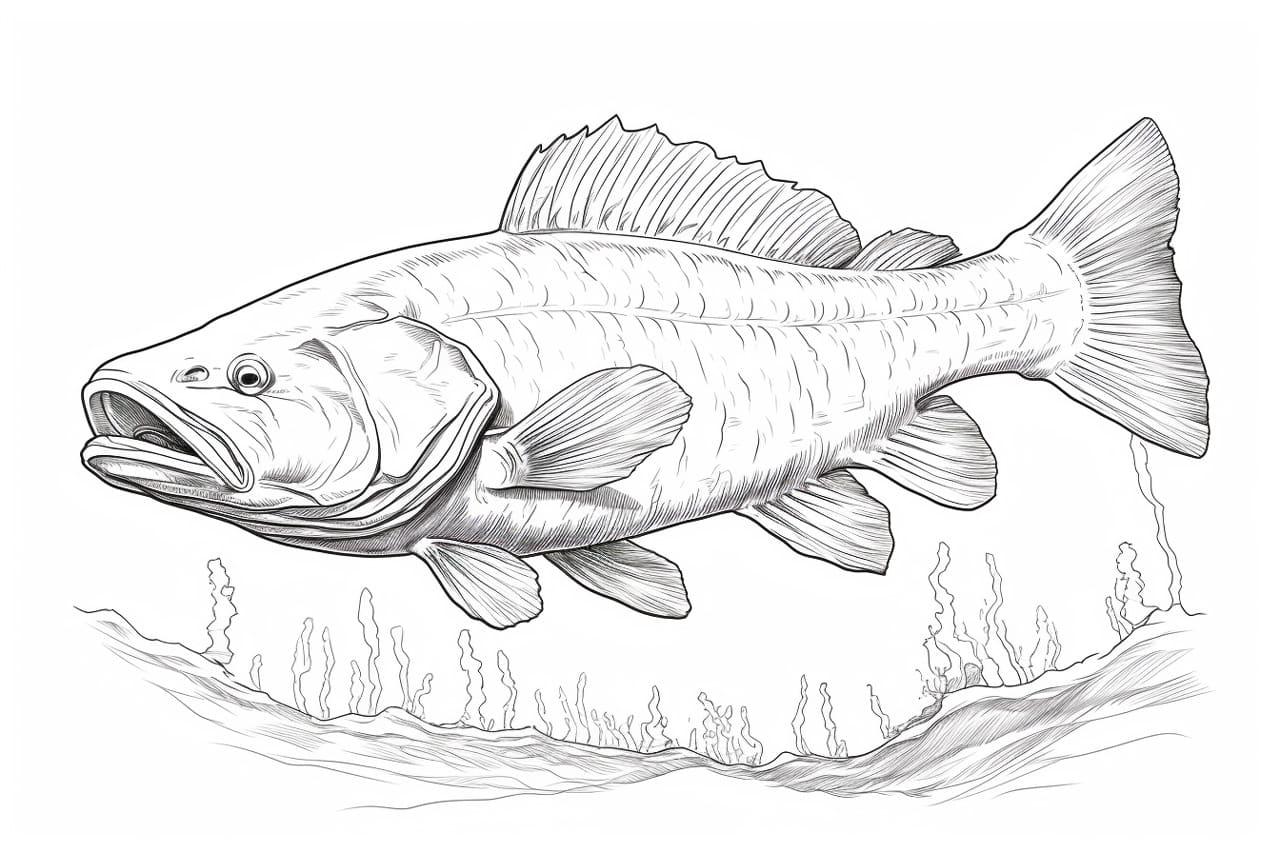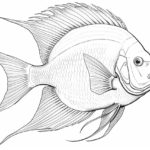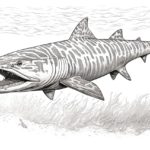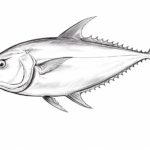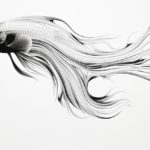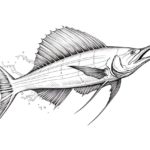Drawing a Coelacanth can be a fascinating and rewarding artistic challenge. This prehistoric fish, often referred to as a “living fossil,” has a unique and captivating appearance that has captured the imagination of artists and scientists alike. With its distinctive lobed fins, robust body, and ancient lineage dating back millions of years, the Coelacanth offers a wealth of intricate details and textures to explore through the medium of drawing. In this guide, we will delve into the techniques and tips for capturing the essence of this enigmatic creature on paper, allowing you to bring this ancient marvel to life through your art. So grab your pencils and paper, and let’s dive deep into the world of drawing the remarkable Coelacanth.
Materials Required
To draw a Coelacanth, you will need the following materials:
- Pencil: for sketching and outlining the initial shapes and details of the Coelacanth.
- Paper: to draw the Coelacanth on.
- Eraser: for correcting any mistakes or removing unwanted lines.
- Colored pencils or markers: to add color and detail to the Coelacanth.
- Reference image of a Coelacanth: to ensure accuracy in your drawing.
- Optional: blending stumps or cotton swabs for blending colors and creating smoother textures.:
How to Draw a Coelacanth: a Step-by-step Guide
Step 1: Gather Materials
Gather the necessary materials for drawing a Coelacanth, including a pencil, eraser, drawing paper, and reference images of a Coelacanth for guidance.
Step 2: Start with Basic Shapes
Begin by sketching the basic shapes of the Coelacanth to establish its overall form. Use light, loose lines to outline the body shape, including the elongated body, large fins, and distinctive features such as the unique lobed fins.
Step 3: Add Details
Once the basic shape is established, start adding details to the Coelacanth drawing. Focus on the specific features such as the bony scales, fin structure, and the characteristic pattern on its body. Pay attention to the placement and size of the fins, as they are a key defining feature of the Coelacanth.
Step 4: Refine the Outline
Refine the outline of the Coelacanth by darkening the lines and adding more definition to the body and fins. Take your time to carefully shape the curves and angles of the Coelacanth’s body to capture its unique appearance accurately.
Step 5: Add Texture and Shading
To enhance the realism of your Coelacanth drawing, add texture and shading to create depth and dimension. Use hatching and cross-hatching techniques to simulate the scales and skin texture of the Coelacanth. Pay attention to light sources to determine where shadows fall and add shading accordingly.
Step 6: Final Touches
Once you are satisfied with the overall look of your Coelacanth drawing, make any final adjustments or additions to enhance the drawing further. Ensure that all details are well-defined, and the proportions are accurate. Use your eraser to clean up any stray lines or smudges for a polished final result.
Step 7: Sign and Date
To complete your Coelacanth drawing, sign your name and date the artwork in a discreet corner. This adds a personal touch and records the creation date of your drawing.
Step 8: Share or Display
Once your Coelacanth drawing is complete, consider sharing it with others or displaying it in your art portfolio. Celebrate your accomplishment and use this drawing as a learning experience to improve your skills in capturing the beauty of marine life through art.
Conclusion
Well done on completing your drawing of the Coelacanth! You have captured the unique characteristics of this ancient fish beautifully. Remember that practice is key to improving your skills, so keep drawing and exploring different techniques. Your dedication and passion for art will continue to shine through in your work. Keep up the great work and never stop creating!
Fun Facts About Coelacanths
- Coelacanths are often referred to as “living fossils” because they were thought to have gone extinct around 66 million years ago, until a living specimen was discovered in 1938 off the coast of South Africa.
- They are ancient fish that have remained relatively unchanged for millions of years, making them a unique and important evolutionary link.
- Coelacanths have distinctive lobed fins that resemble limbs, leading some scientists to believe they may have been an early evolutionary precursor to land-dwelling vertebrates.
- They are deep-sea dwellers, typically found at depths of around 500-800 meters in underwater caves and rocky outcrops.
- Unlike most fish, coelacanths give birth to live young rather than laying eggs.
- They have a specialized organ called a rostral organ on their snout that is believed to help them detect electric fields and navigate in their dark, deep-sea environment.
- Coelacanths have a relatively low metabolic rate compared to other fish, allowing them to survive in the low-oxygen environments of the deep sea.
- They have a unique hinge in their skull that allows their large mouths to open wide, enabling them to consume prey larger than themselves.
- Coelacanths are known to be slow-moving and elusive, making them difficult for researchers to study in their natural habitat.
- Despite their ancient lineage, coelacanths are not considered endangered, but they are still a rare and fascinating species to encounter in the wild.
Suggestions for Scenes and Settings for Coelacanth Drawings
- An underwater coral reef with a Coelacanth swimming among colorful fish and plants.
- A deep-sea hydrothermal vent environment with a Coelacanth exploring the unique geological formations.
- A Coelacanth gliding through a dark and mysterious underwater cave.
- A Coelacanth depicted in its natural habitat near the ocean floor, surrounded by rocks and seaweed.
- A scientific illustration showing the anatomy and features of a Coelacanth in detail.
- A Coelacanth swimming in a school with other prehistoric creatures from the same era.
- A futuristic underwater city setting with a Coelacanth passing by advanced technology and buildings.
- A whimsical and imaginative scene of a Coelacanth interacting with mermaids or other mythical sea creatures.
- A serene underwater landscape with a Coelacanth peacefully resting on a sandy seabed.
- A dramatic and dynamic composition capturing a Coelacanth hunting or evading predators in the deep sea.

